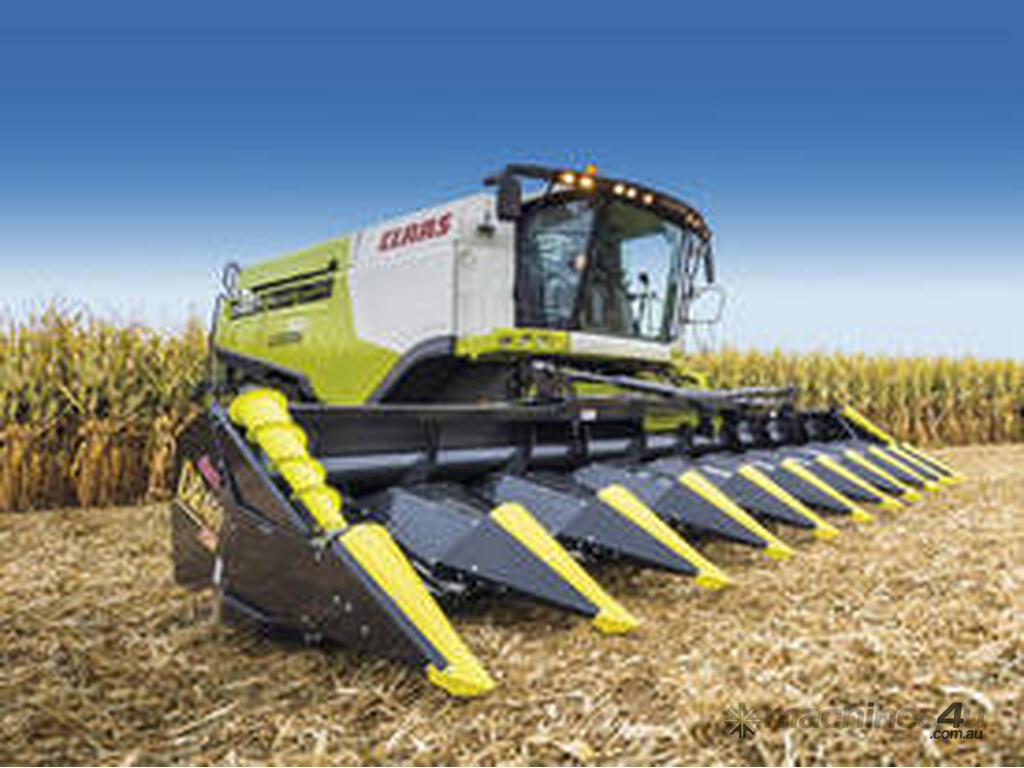ORDERS MUST BE PLACED NOW - CALL FOR PRICES
If your in the market for a new Corn Head PLEASE CALL NOW to discuss, orders must be placed now for next season or you will miss out.
DRAGO Corn, Sorghum and Sunflower heads are emerging as Australia’s leading brand and are very price competitive in this industry
New 2022 Olimac DRAGO GT 12 Row 1m Corn Head without Chopper
Pros and Cons of Different Corn Row Spacings
The northern Corn Belt has shown the highest and most consistent potential yield increases due to narrow corn row spacing.
Farmers should realize there is a year-to-year variability in potential yield response to narrow corn rows that may occur due to environmental conditions.
Proper row spacing allows plants room to explore for nutrients and minimizes the adverse effects of competition from neighboring plants. In Iowa, and in most regions of the Midwest, 20 inches and 30 inches are the most common row spacing configurations.
At most production sites, 20 inches has been shown to be a better row spacing than 30 inches for corn production.
Corn product selection and plant population are the most important decisions for any row spacing, including narrow and twin row spacing.
BACKGROUND
At one time, corn row spacing was determined by the amount of space needed for farm animals to pull equipment between rows. In the 1960s, adoption of narrower rows started when research showed potential corn yield increases in 30-inch rows compared to 38-inch rows.1 Due to the ongoing goal of increasing yield potential for an ever-growing population, research continues to compare the pros and cons of 30-inch rows to corn rows with more narrow spacing.
Also, crop yield responses to farm operations can be highly variable and are often impacted by the environmental conditions during the growing season. Farmers should make it a habit of testing new products/concepts on a small scale on their farm to see how they fit in their operation.
PROS OF NARROW CORN SPACING
The potential benefits of narrow row spacing (less than 22.5 inches) can include:
Equidistant in-row plant spacing. In theory, a more equidistant spacing within the row will help minimize competition among plants for water, nutrients and light.2 Less competition among plants can help when a stress factor is present.
Better weed control. Narrow rows can allow for faster canopy closure and more shading, which can result in better weed control.3
Less water loss to evaporation. Narrow rows shade the soil surface earlier in the season, keeping soil moist longer.4
Consolidating farm equipment. Narrow rows can permit farmers to use one planter for multiple crops.
Higher yield potential. The benefits mentioned above create the potential for yield increases?.
CONS OF NARROW CORN SPACING
Potential disadvantages of narrow row spacing can include:
An increased chance of compaction from farm equipment during narrow row planting.1
The possibility that mechanical cultivation and postemergence herbicide applications may be more difficult in narrow rows.3
Extra expenses associated with switching to narrow rows, which can include a new or modified planter, rims and tires, rate increases in insecticide rates, and starter fertilizer.3
TWIN ROWS
An alternate option to narrow row spacing is a twin row planting configuration. Twin rows have a 30- or 38-inch center row, which is flanked by twin rows that are 7.5 inches apart and synchronized to have a uniform triangular spacing (Figures 1 and 2). The benefits of twin row spacing are similar to those of the narrow row spacing. For cotton growers, twin row spacing allows corn and soybeans to be planted in twin rows with the same equipment used to plant cotton in a single-row formation with minimal equipment issues.
